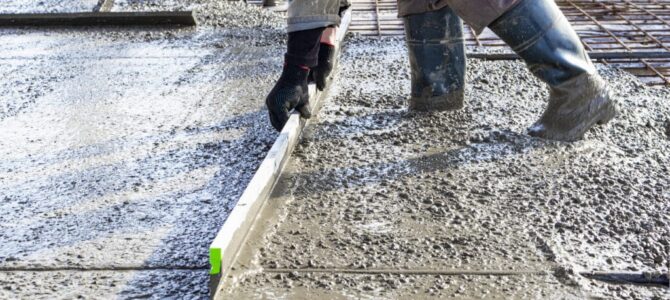Before beginning construction, it is important to prepare the slab extension area. After building concrete forms and installing rebar, once the concrete has set it is important to smooth and finish it as quickly as possible.
Preparation
Before beginning to expand your concrete slab, it is necessary to prepare the area. This includes digging a trench for your frame and preparing a base using crushed stone or sand which should then be compacted thoroughly; keep in mind the size of your finished concrete slab when determining how much base material you require.
Rebar is essential when building a slab, as its purpose is to reinforce and prevent cracking of concrete. Furthermore, installing control joints (planned cuts within the slab that help prevent cracking) must also be properly planned; spacing for these should not exceed three times the thickness of your slab thickness in inches.
Final step when pouring concrete: bracing the frame will ensure that it stays put without moving too quickly and shifting too much.
Forms
As with any renovation project, extending a concrete slab requires creating new forms. You can do it yourself but for best results and durability it is advisable to hire professional help for this step of renovation.
An extension to your concrete slabs Melbourne can add valuable living space, yet this project will involve considerable construction work – and should only be attempted if you are feeling confident enough.
Construction phase calls for using durable lumber that will withstand the stress of pouring concrete, while creating a slight slope to aid drainage.
Once your slab has been constructed and forms installed, spread and compact three inches of granular fill – whether gravel or all-purpose sand fill, though gravel tends to be more durable in terms of stability when compacted – evenly across its surface. When this step is complete, “screeding” its surface using flat lumber should allow you to “sandwich” it off using bull float or finishing trowel for finishing touch before leaving for curing time to pass for two or three days before testing or testing results will become visible when testing has passed!
Pouring
Slabs represent the majority of structural load in buildings. Therefore, it is imperative that they are designed and constructed correctly in order to avoid cracking or collapse; columns and beams serve this purpose effectively.
To join your extension to an existing slab, it will be essential to install rebar. This will prevent it from separating due to settlement. In order to do this, drill 6-8 inch holes into the existing slab and secure them with rebar ties.
Once your holes have been drilled and your rebar installed, it is time to pour your concrete. In order to do so, build a frame using lumber and stakes as a mold for the concrete to set in. When finished pouring it will need to be smoothed over with bull float and finishing trowel to round all edges and ensure smooth surfaces.
Curing
Once your concrete slab extension has been constructed and finished, it must be properly cured to achieve full strength. Curing involves periodically spraying it with water to keep it moist and prevent it from drying out too quickly – an 18 to 28 day process!
Fogging or evaporation retarders can also help accelerate the curing process. Fogging involves spraying mist of water above concrete slabs in dry climates to create an environment conducive to curing; additionally, this method helps finishers by increasing workability of concrete, making shaping and finishing easier.
Control joints will need to be added into your new concrete, which are planned cuts that help determine where cracks appear as the concrete settles and sets. As a rule of thumb, control joints should not exceed three times the slab thickness in order to help ensure an even finish and prevent cracking.


